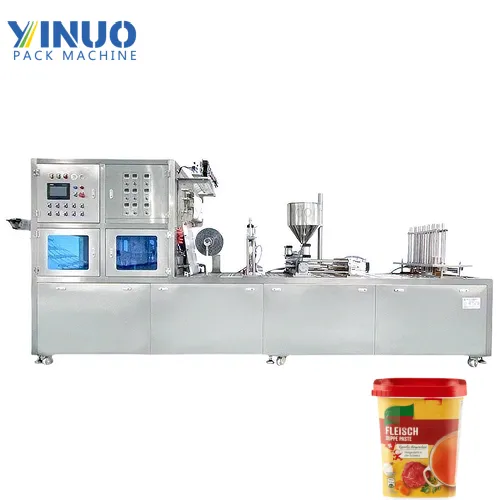Choosing the right automatic meat paste filling and sealing machine is a key decision for any food processing business. The right machine can improve production efficiency, ensure hygiene, and maintain consistent product quality. However, with so many models and technologies on the market, understanding what to look for is crucial. This guide will walk you through the essential factors to consider when selecting the best equipment for your production line.
Before selecting a machine, analyze the viscosity, texture, and ingredients of your meat paste. Meat pastes can vary from smooth to chunky, and their composition affects the type of filling system you’ll need.
High-viscosity meat paste: Requires piston or servo-driven filling systems for accurate dosing.
Chunky or fiber-rich paste: Needs larger filling nozzles to prevent clogging.
Heat-sensitive paste: Choose a machine with temperature control and gentle filling action to avoid spoilage.
Different filling mechanisms are suitable for different product types. The most common options include:
Piston filling machines: Ideal for thick or semi-solid pastes, offering precise volume control.
Pump filling machines: Suitable for continuous, high-speed production lines.
Servo filling systems: Provide high accuracy and flexibility for products with varying viscosity.
For meat paste, piston-type filling machines are generally the best choice due to their strength and precision.
Determine the type of container or pouch you’ll use:
Plastic or aluminum cups: Common for ready-to-eat meat pastes.
Pouches or sachets: Suitable for single-use or small packages.
Glass or plastic jars: Preferred for retail packaging.
Choose a filling and sealing machine compatible with your packaging format. Some advanced models are multi-format, allowing quick changeovers between different container types.

A reliable seal is critical for food preservation and product safety. There are several sealing options:
Heat sealing: Common for pouches and cups; offers secure, tamper-proof seals.
Ultrasonic sealing: Energy-efficient and suitable for heat-sensitive packaging materials.
Vacuum sealing: Used when extending shelf life is a priority.
Ensure the sealing temperature, pressure, and time are adjustable for optimal results.
Production capacity must match your output requirements. Consider:
Filling range per cycle (in grams or milliliters).
Number of filling heads (single or multi-head systems).
Cycle speed (containers per minute).
If you operate a large-scale facility, choose a fully automatic multi-head machine to maximize throughput. For smaller businesses, a semi-automatic model may provide a more cost-effective solution.
Since meat paste is a perishable product, the machine’s design should meet food-grade hygiene standards. Look for:
Stainless steel construction (SS304 or SS316) for corrosion resistance.
Explore more:CIP (Clean-In-Place) systems for automated cleaning.
Smooth surfaces and sanitary seals to prevent bacterial buildup.
Compliance with HACCP or CE standards ensures the equipment meets safety and hygiene regulations.
Modern filling and sealing machines feature PLC (Programmable Logic Controller) and touchscreen HMIs for easy operation.
Key functions to look for:
Adjustable filling volume and sealing time.
Real-time production monitoring.
Fault detection and automatic shutdown systems.
Memory settings for multiple product types.
Automation not only increases accuracy but also reduces human error and labor costs.
Choose a manufacturer that provides local technical support, training, and spare parts availability. Regular maintenance is vital for long-term reliability. Ask about:
Warranty period and coverage.
Replacement part lead times.
On-site service and remote troubleshooting options.
A reliable supplier ensures minimal downtime and stable production performance.
While initial cost is important, focus on total cost of ownership (TCO)—including power consumption, maintenance, and spare parts.
Energy-efficient machines can significantly reduce operating costs over time. Additionally, check for:
Low air and energy consumption.
High filling precision to minimize product waste.
Durable components that extend machine life.
If your production demand may increase, consider a modular or upgradeable design. A flexible system allows you to:
Add more filling heads.
Integrate labeling, capping, or vacuum systems.
Connect to conveyor lines or robotic arms.
Investing in a scalable solution ensures your Meat Packaging Machines can grow with your business.
Choosing the right automatic meat paste filling and sealing machine requires balancing performance, hygiene, automation, and long-term cost efficiency. Focus on your product characteristics, production needs, and quality standards when making your decision.
A well-selected machine will not only improve production speed but also guarantee product consistency, reduce waste, and maintain the safety and freshness that customers expect.
Previous: Які переваги оптових алюмінієвих U-скоб для ваших проектів?
Next: How Does an Automatic Filling and Sealing Machine Work?
Comments
Please Join Us to post.
0